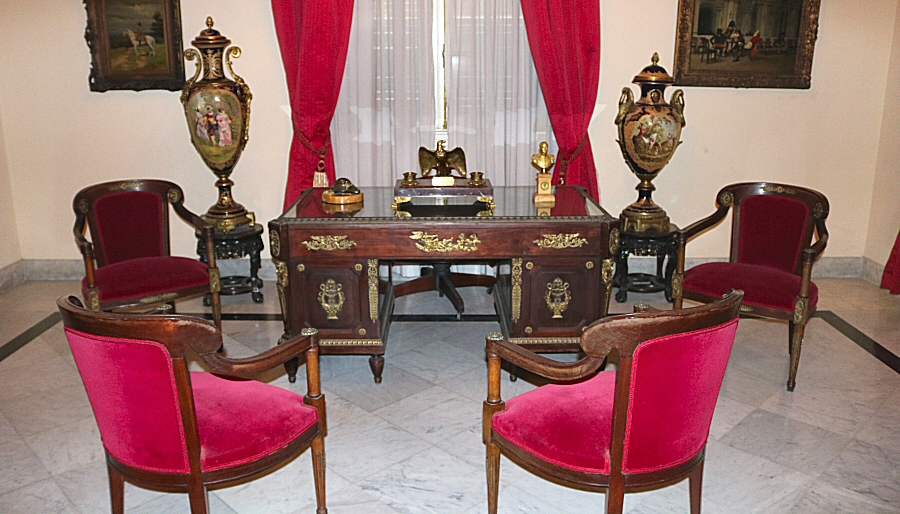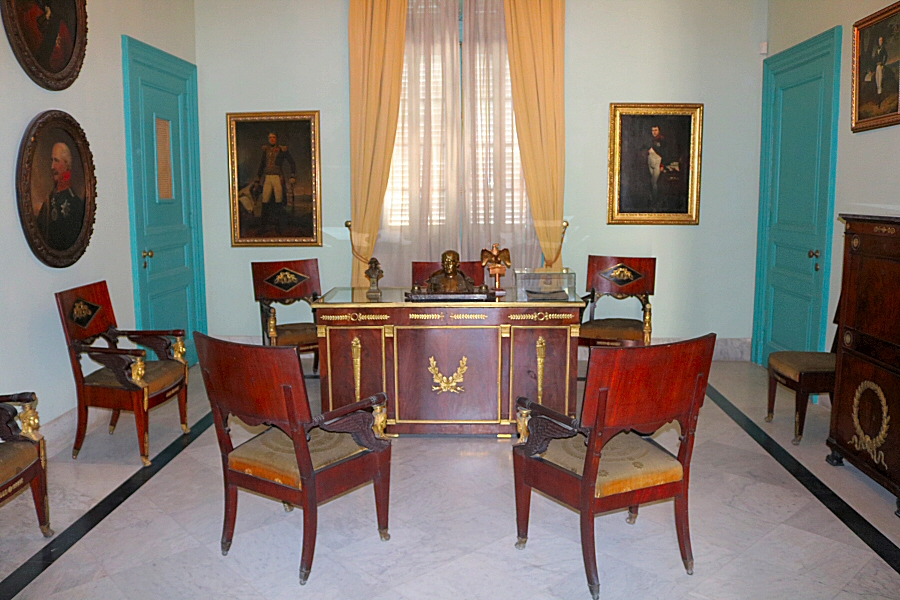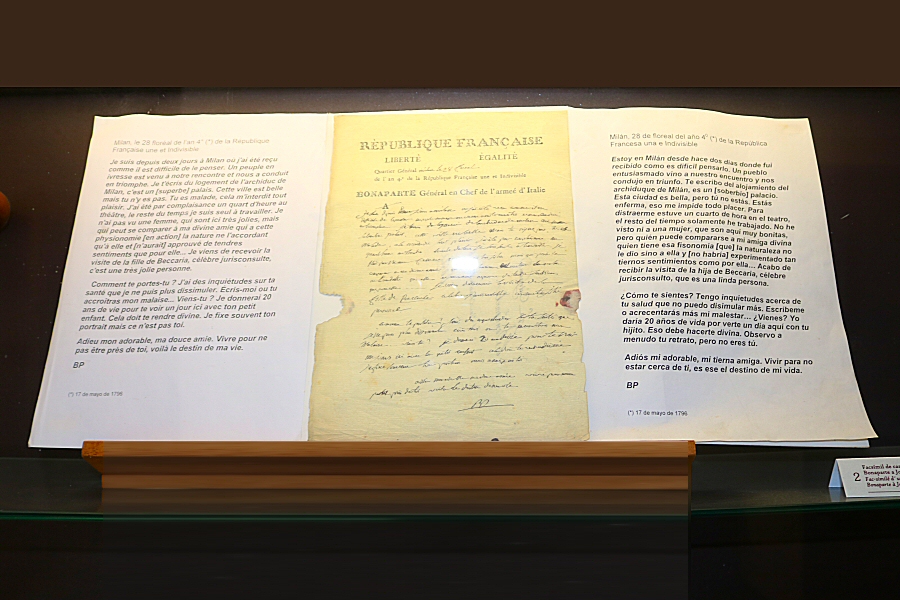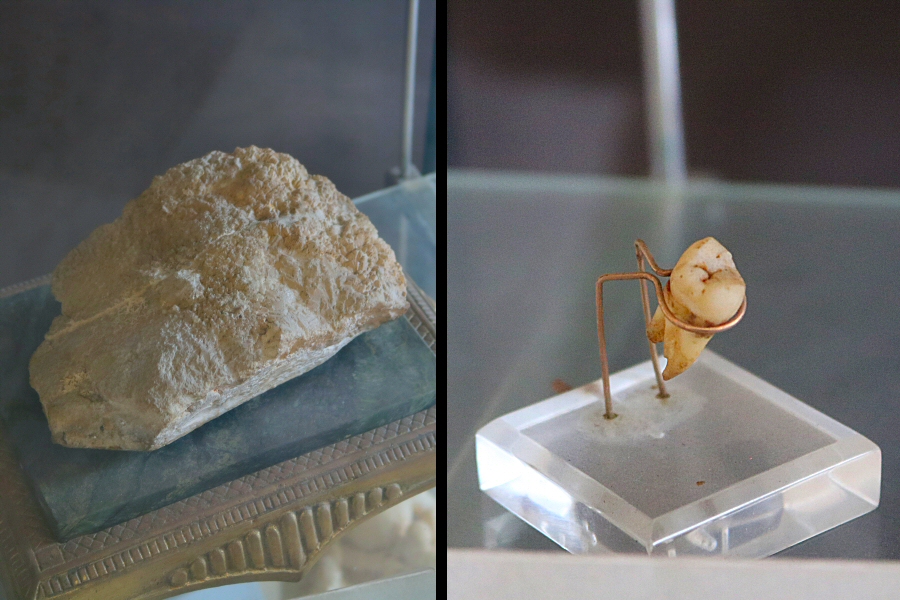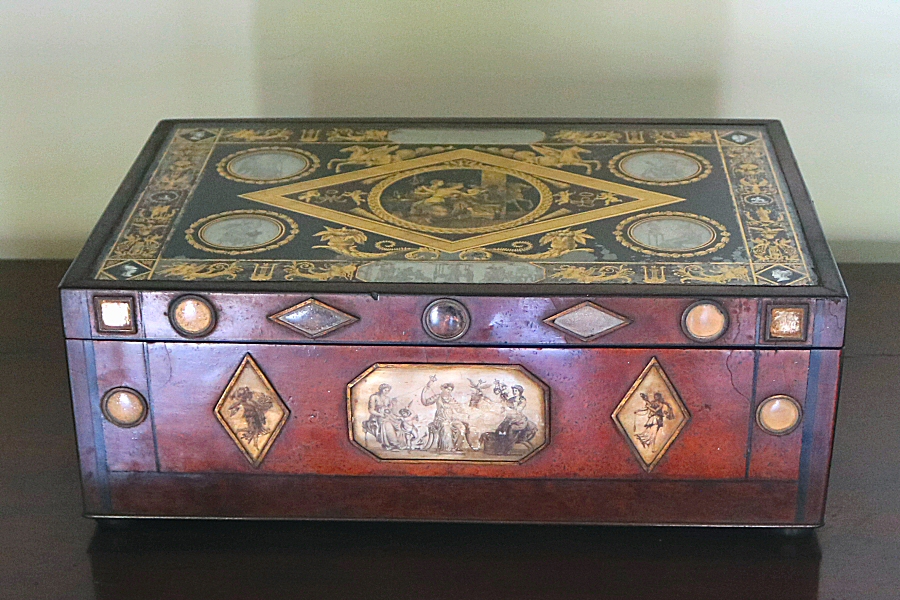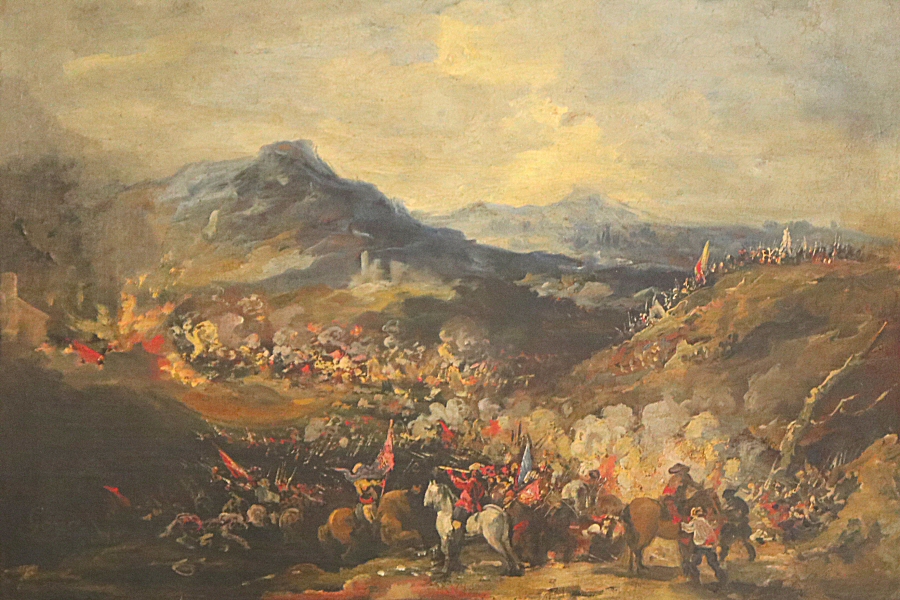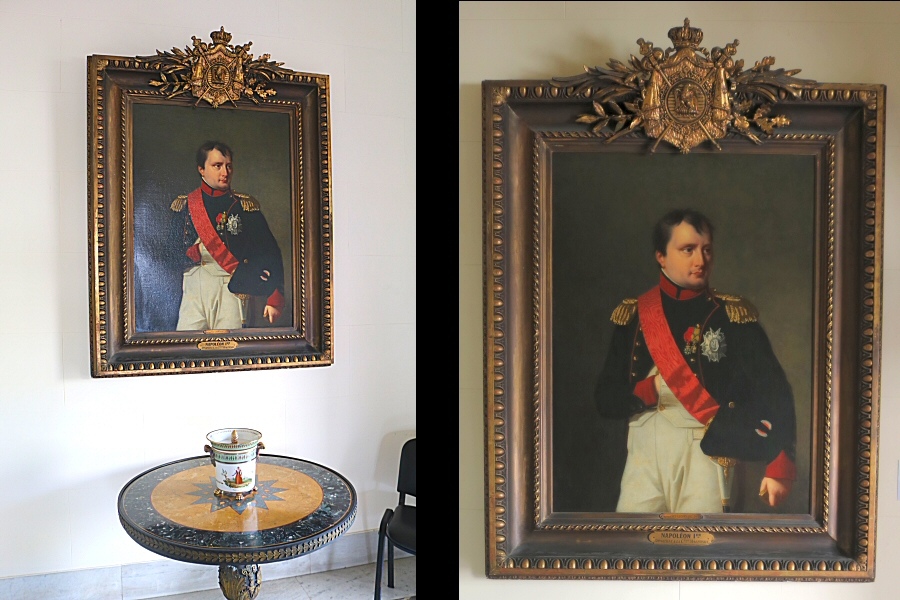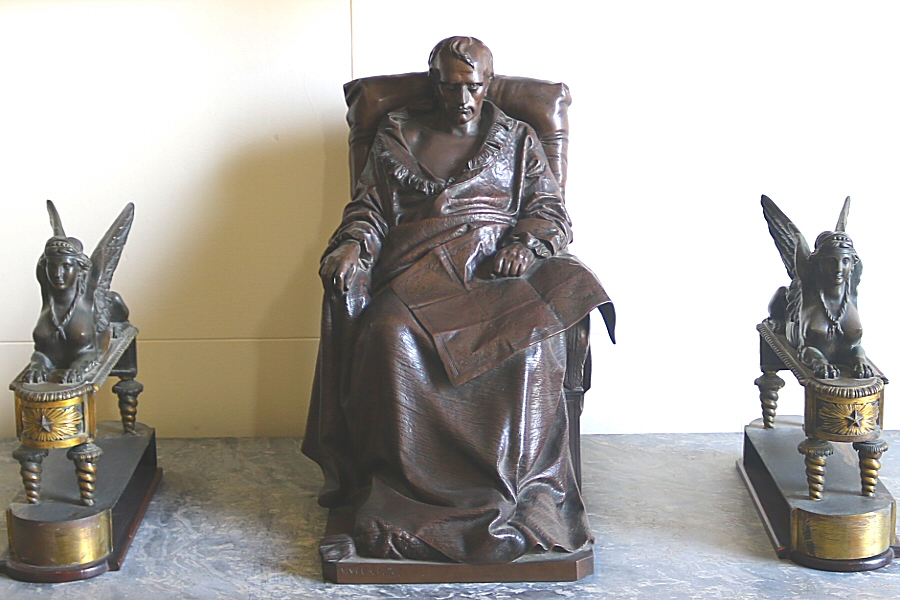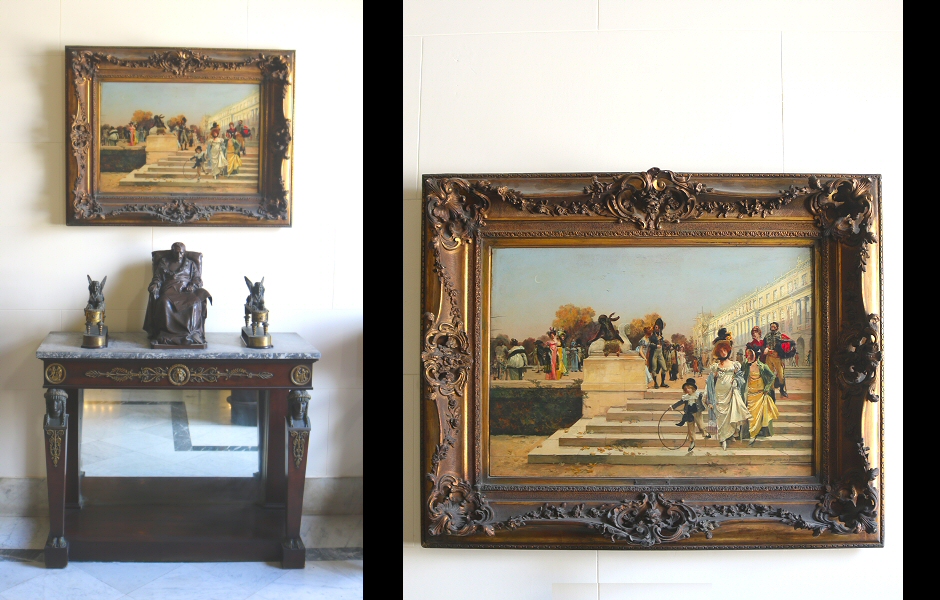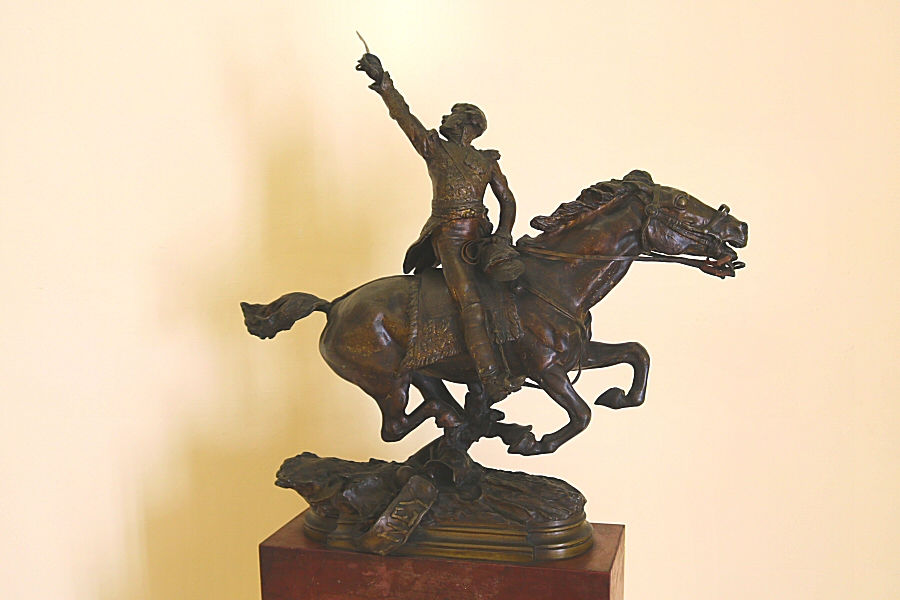
The third floor consists of the bedrooms,
the central corridor, the offices and some small rooms.
The first office is decorated with imperial
style furniture, consisting of a desk and five chairs. The desk
has several bronze adornments and it is made of Cuban mahogany.
On the desk stands the bust of Napoléon, created by the French
sculptor Pierre Philippe Thomire. The emperor is wearing the
medals of the Cross and Grand Eagle of the Légion d'honneur. The
inkwell, made in France, is a good combination of marble and
bronze. The grandiose French vases and some oil paintings on the
walls are enriching the office. The Sévres style porcelain vases
are from the 18th century and the work of Van Falens and E.
Collot respectively.
Two oil paintings are hung on the wall
behind the desk. The oil painting on the left, representing
Napoléon on horseback during the Battle of Jena, is the work of
the French painter Jean Jacques Berne Bellecour. It was painted
in 1910.
The oil painting on the right represents
Napoléon talking to his best three generals: General Jean
Andoche Junot, Louis Bonaparte, Roi de Hollande, and Marshal
André Masséna.
The second office room is much more crowded
than the first one. The walls are covered with the oil portraits
of several personalities of the time of Napoléon, such as the
senior surgeon of the cuirassiers; the head of the battalion;
Assistant General Edme Drigon, Marques de Magny d'Ostans;
General Nicolia Schmidt (by Jean Baptiste); Duke of Wellington
Arthur Wellesley (by John Boaden); Marshal Gebhard Leberecht von
Blücher (by John Boaden).
There are also some portraits of Napoléon
Bonaparte: "Napoléon in His Work Cabinet", by Antoine Jean Gros
and Portrait of Napoléon, by Jean Horace Vernet. In the latter,
Napoléon is depicted wearing the cross and plaque of the Légion
d’Honneur and the cross of the Order of the Iron Crown; both of
the orders were founded by him. This is one of three portraits
of Napeleon painted by Jean Horace Vernet during the period of
1815 and 1816. Two paintings of the Battle of Waterloo adorn the
walls, one by Alexander Ivanovich Sauerweid (1815), and the
second one by Thomas Rowlandson.
In the other rooms of the third floor, there
are also valuable pieces related with Napoléon Bonaparte, like
the facsimile of the letter, written by the Emperor to his first
wife Joséphine Beauhernais in Milan in 1796. The letter ends
with the sentences: “I would give 20 years of life to see you
one day here with your little son. That must make you divine. I
often watch your portrait, but it's not you. Goodbye my
adorable, my tender friend. To live not to be near you is the
destiny of my life.” Napoléon left Paris to lead the army into
Italy two days after the wedding. Even though, Napoléon sent many
love letters to Joséphine during the period when he was far from
her, she rarely wrote back, and when she replied, her sentences
were dry and emotionless.
There is also the historical book, written
by Theodore Hook and published in Paris in 1819. He has numerous
notices and some drawings about the life of Napoléon on the St.
Helena island in 1818.
Don’t miss to have a look at the small rock
in the glass cabinet, collected from the location of the tomb of
the Emperor on St. Helena Island. In the same glass cabinet, you
will see also Napoléon’s molar that was extracted during his
stay on S. Helena and the large medal collection of the museum.
On the third floor, you will see also a wooden painting box with engravings. It belonged to Empress Marie Louise, the second wife of Napoléon. The engravings that show the Greek gods, are the work of the French artist Jean-Philippe-Gui Le Gentil de Paroy. On the front and back sides of the box, inlaids show the Empress protected by Marshals of the Empire, and the Empress engaged in weaving.
The oil painting with the title “the Battle” represents the
battle between the Spanish and French troops. The battle ended
with the defeat of the French troops. Thus, Napoléon had to go
to Spain with his army to rescue the throne of his brother
Joseph Bonaparte. The painting is the work of Eugenio
Lucas y Padilla.
Special emphasis deserves the
The bronze sculpture of Napoléon, representing him during his imprisonment on St. Helena island, is the work of Italian sculptor Vincenzo Vela. It was created in 1866. It has the title “Last Days of Napoléon”, and the emperor is portrayed with his hand on a map of Europe on his lap and his eyes looking off into the distance.
The museum has also the70-cm tall bronze sculpture of Marshal Michel Ney, the 1st Duke of Elchingen, that . It is the work of the French painter and sculptor Georges Récipon. It is entitled as "Military Horse Charging".
